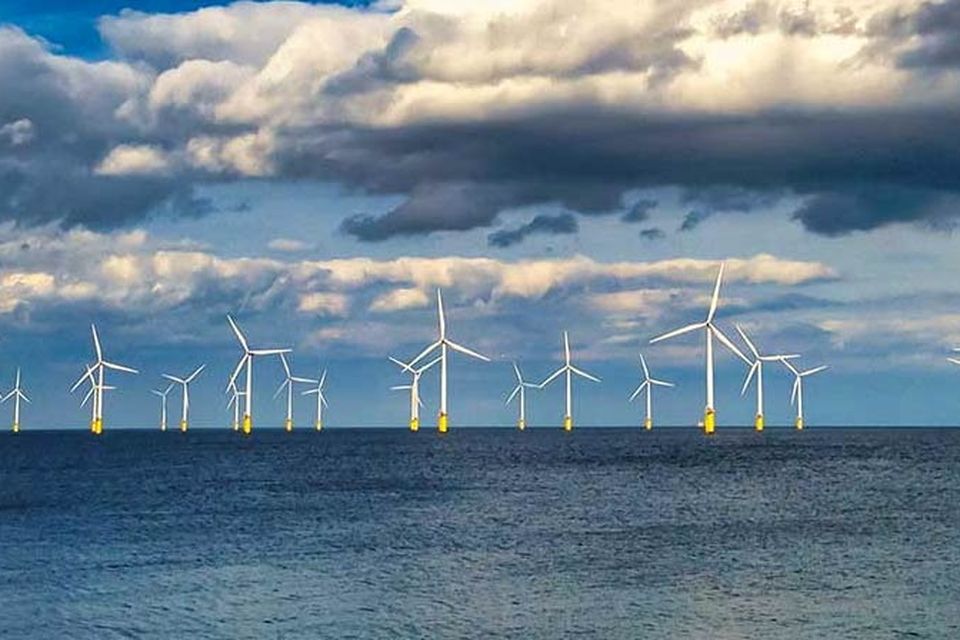ESB confirms deal with Orsted to develop Irish offshore wind projects
Wind farms will cost billions of euro to construct
The ESB and Orsted will develop wind farms around the coast of Ireland
THE ESB and Danish energy group Orsted have confirmed that they will jointly develop an offshore wind energy farm portfolio off the coasts of Ireland.
The partnership has the potential to develop up to 5GW of projects, including wind farms and hydrogen production.
The projects include sites off counties Clare, Wexford, Waterford, Cork, Dublin and Wicklow.
They are Moneypoint One, at 400MW, Moneypoint Two (1GW), Loch Garman (600MW), Helvick Head (800MW), Celtic One (700MW), Celtic Two (800MW), and Sea Stacks (800MW).
The two companies are already development partners in Scotland, where they co-own the Neart na Gaoithe offshore wind energy farm that’s currently under construction.
In 2021, the ESB saw its then co-development partner for its Irish projects, Norway’s Equinor, end its involvement in the plans.
It was reported at the time that Equinor decided to pull out of Ireland that its decision was based in part on regulatory and planning issues here.
Last year, energy giant Shell exited the Irish offshore wind energy market, having been working in partnership with Irish marine renewable energy developer, Simply Blue.
But Simply Blue also announced this week that it has now teamed up in a 50-50 partnership with French energy giant EDF Renewables to develop two floating wind energy projects off the Irish coast.
The ESB’s 50-50 partnership with Orsted includes an agreement to explore opportunities from renewable hydrogen produced from the offshore wind energy projects in the longer term.
The EU has set ambitious targets for member states for the production of energy from green sources.
Ireland plans to be generating 80pc of its electricity from renewables by 2030.
That goal foresees the installation of 7GW of offshore wind energy generation capacity by the end of this decade. Of that, it is anticipated that 2GW will be generated from floating offshore wind farms.
Jim Dollard, ESB executive director, generation and trading, said that the semi-state company has gained “considerable expertise” in offshore wind projects in recent years.
“ESB is developing a large renewables pipeline, and as part of that has developed a strong portfolio of offshore wind projects around the coasts of Ireland.,” he added.
The Neart na Gaoithe project in Scotland is a 50-50 venture between the ESB and EDF Renewables.
The wind farm will generate up to 450MW of electricity when completed. Onshore work started in 2019 and it’s expected to be operational next year.
The project has been a huge technical and financial challenge. It was significantly affected by challenging seabed conditions and supply-chain constraints as a result of the Covid pandemic.
Earlier this year, industry publication PeakLoad reported that the ESB was in advanced talks to invest in two other multi-billion euro offshore wind projects off the coast of Scotland. The energy projects – expected to generate almost 2.4GW of electricity – are being developed by Canada’s Northland Power.
Minister for Enterprise, Trade & Employment, Simon Coveney, said that the latest partnership between the ESB and EDF to develop the Irish projects is an “important milestone” in building a new, indigenous energy system.













